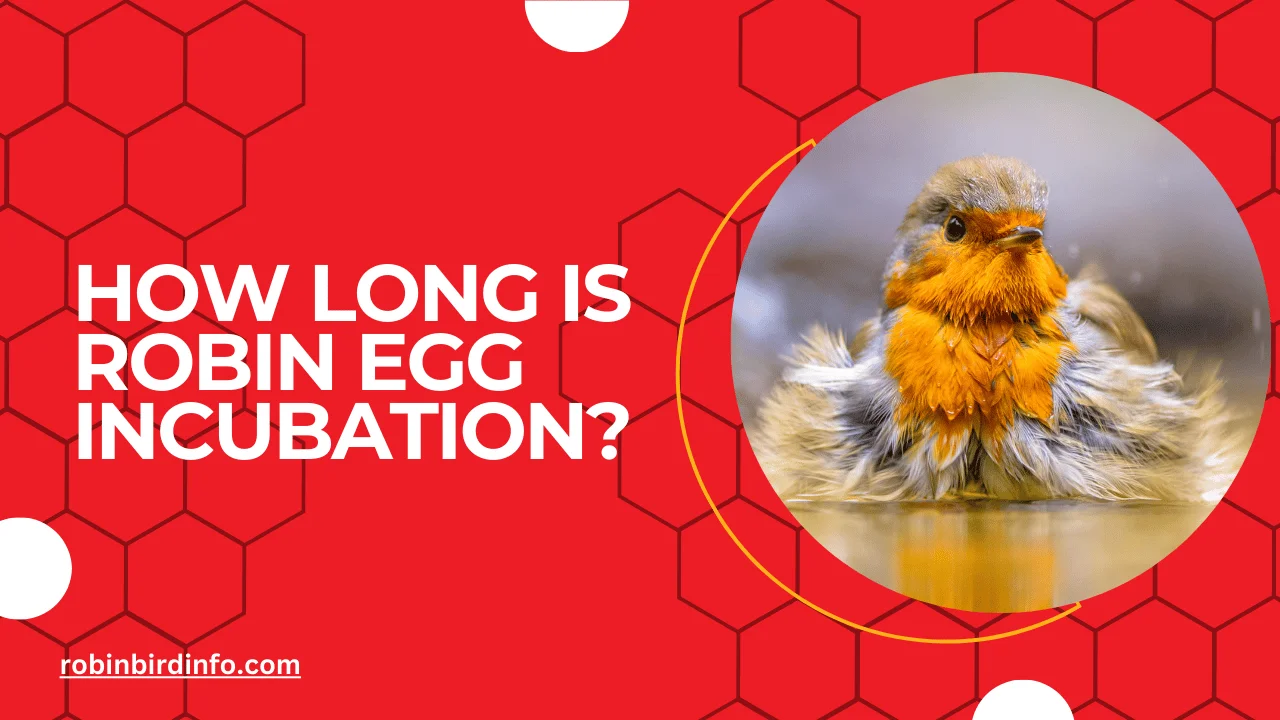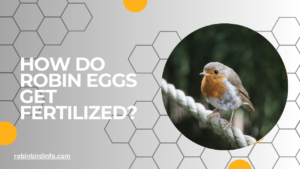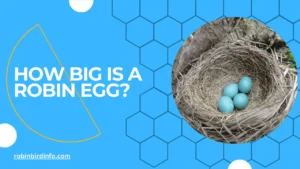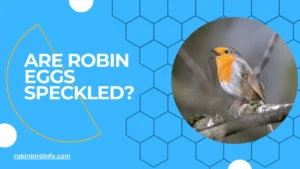Have you ever gazed upon a Robin’s nest, a cozy cradle woven with twigs and leaves?
Filled with vibrant blue treasures, it represents a promise of new life. But how long does this promise take to unfold? How long does it actually take for Robin eggs to hatch? This seemingly simple question unlocks a fascinating window into the world of Robin reproduction.
The incubation period, the time it takes for a developing chick to emerge from its shell, is a critical stage in a Robin’s life cycle. It’s a period of delicate balance, where the parent Robins must ensure the perfect temperature and constant care for their precious eggs.
Understanding this time frame allows you to appreciate the dedication of these feathered parents and the remarkable feat of life unfolding right in your backyard.
So, grab a cup of tea, settle in, and let’s unravel the mystery of Robin egg incubation.
We’ll explore the typical duration of this waiting game, the factors that can influence it, and the incredible efforts of both parents to nurture their developing chicks.
Contents
- 1 Section 1: The Nesting Process
- 2 Section 2: The Incubation Period
- 3 Section 3: The Role of Both Parents
- 4 Section 4: Challenges Faced During Incubation
- 5 Section 5: Conservation Implications
- 6 Conclusion
- 7 FAQ’s
- 7.0.1 How long does it take for a Robin egg to hatch?
- 7.0.2 Do both male and female Robins incubate the eggs?
- 7.0.3 What factors can affect the incubation period?
- 7.0.4 What happens if a Robin egg is removed from the nest?
- 7.0.5 How do Robins keep their eggs warm?
- 7.0.6 What do Robins eat while incubating eggs?
Section 1: The Nesting Process
Nest Construction: Robins typically build their nests in trees, shrubs, or on buildings. They construct cup-shaped nests using twigs, grass, leaves, and mud. The nest is often lined with softer materials, such as hair or feathers, to provide insulation and comfort for the eggs and young.
Egg Laying: Female Robins usually lay 3-4 eggs per clutch. The eggs are a beautiful pale blue color and are incubated by both parents. The timing of egg laying can vary depending on factors such as weather conditions and food availability.
Section 2: The Incubation Period
Duration of Incubation: The average incubation period for American Robin eggs is around 12-14 days.
Factors Affecting Incubation: Several factors can influence the length of the incubation period, including:
- Weather Conditions: Extreme weather conditions, such as cold spells or heavy rain, can extend the incubation period.
- Parental Care: The level of parental care, including the frequency of incubation shifts and the quality of nest protection, can affect the incubation period.
- Egg Size and Development: Larger eggs may take slightly longer to incubate than smaller eggs.
Section 3: The Role of Both Parents
Incubation Duties: Both male and female Robins share the responsibility of incubating the eggs. They take turns sitting on the nest to keep the eggs warm and protect them from predators.
Parental Care: After the eggs hatch, both parents continue to care for the young. They provide food, warmth, and protection until the young birds are old enough to leave the nest.
Section 4: Challenges Faced During Incubation
Predation: Robin nests are vulnerable to predation by a variety of animals, including snakes, squirrels, cats, and raccoons.
Weather Extremes: Extreme weather conditions, such as heavy rain, storms, and prolonged cold spells, can pose significant risks to Robin nests and eggs.
Parasites and Disease: Parasites, such as mites and lice, can infest nests and harm developing chicks. Additionally, diseases can weaken the parent birds and reduce their ability to care for their young.
Section 5: Conservation Implications
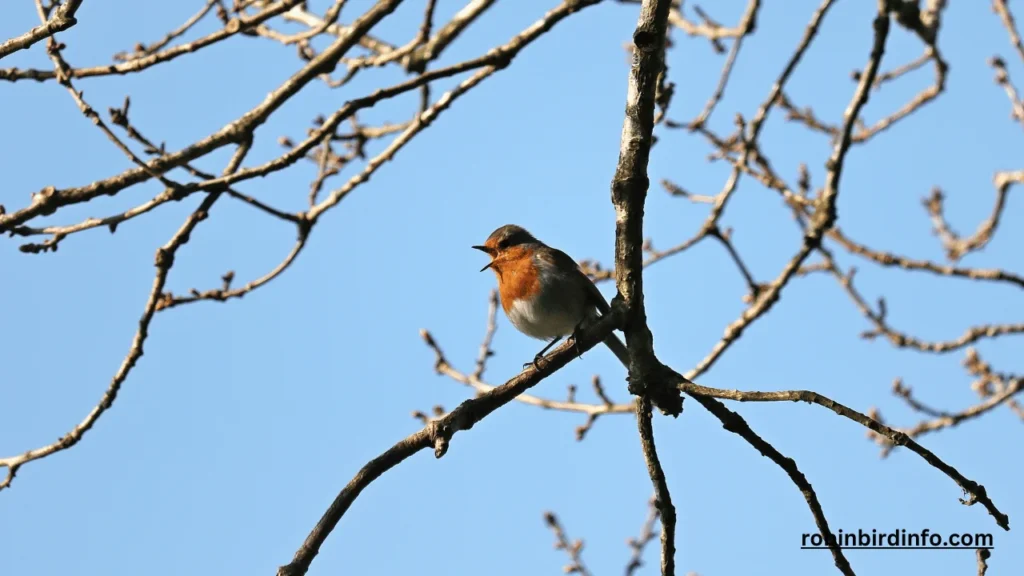
Habitat Conservation: Protecting and restoring natural habitats, such as forests and woodlands, is crucial for the survival of Robin populations.
Reducing Threats: Minimizing threats to Robin nests, such as controlling predator populations and reducing pesticide use, can help to increase nesting success.
Citizen Science: Participating in citizen science projects can help researchers monitor Robin nesting behavior and identify potential threats. By collecting data on nesting success, nest site selection, and other relevant factors, citizen scientists can contribute to conservation efforts.
Conclusion
The incubation period of American Robin eggs is a critical stage in their life cycle.
By understanding the factors that influence this period, we can appreciate the challenges faced by these birds and take steps to protect them. By conserving habitats, reducing threats, and participating in citizen science, we can help ensure the continued survival of Robin populations.
FAQ’s
How long does it take for a Robin egg to hatch?
It typically takes about 12-14 days for a Robin egg to hatch.
Do both male and female Robins incubate the eggs?
Yes, both male and female Robins share the responsibility of incubating the eggs. They take turns sitting on the nest to keep the eggs warm.
What factors can affect the incubation period?
Several factors can influence the incubation period, including weather conditions, the health of the parent birds, and the quality of the nest.
What happens if a Robin egg is removed from the nest?
If a Robin egg is removed from the nest, it will not survive. The egg needs to be incubated at the correct temperature and humidity to develop properly.
How do Robins keep their eggs warm?
Robins keep their eggs warm by sitting on them and providing a constant source of heat. They may also use their bodies to shield the eggs from wind and rain.
What do Robins eat while incubating eggs?
Both male and female Robins need to eat regularly to maintain their energy levels during incubation. They often forage for insects and berries.

